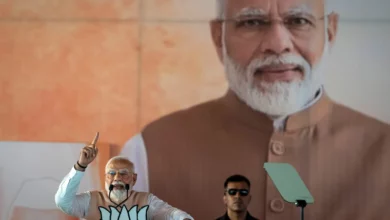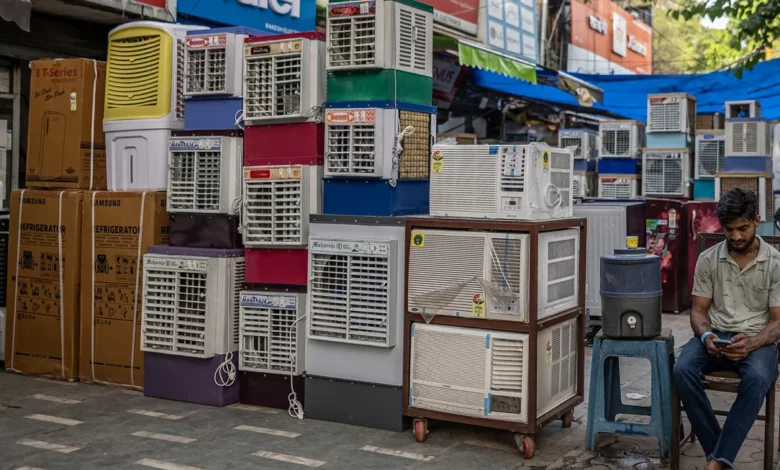
When blistering extreme heat gripped India’s capital this summer, Ramesh says he felt faint but had no option other than to keep on toiling under the burning sun to provide for his family.
“The heat is becoming unbearable,” the 34-year-old bricklayer told CNN. “But we do not have a choice, we have to work.”
Ramesh lives with his parents, three brothers, a sister-in-law, and three children, in a congested suburb in western Delhi, a city that has made headlines in recent years as mercury levels regularly climb to dangerous levels.
And as temperatures topped 40 degrees Celsius (104 Fahrenheit) this June – closing schools, damaging crops and putting pressure on energy supplies – the heat was making his family sick too.
Ramesh, who goes by one name, says he borrowed $35 – nearly half of his monthly salary – from relatives to buy a second-hand air conditioner for his home.
“It makes a noise, sometimes it releases dust,” he said. But he cannot do without it.

By 2050, India will be among the first places where temperatures will cross survivability limits, according to climate experts. And within that time frame, the demand for air conditioners (AC) in the country is also expected to rise nine-fold, outpacing all other appliances, according to a recent report by the International Energy Agency (IEA).
Ramesh’s predicament encapsulates the paradox facing the world’s most populous country of 1.4 billion: The hotter and wealthier India gets, the more Indians will use AC. And the more they use AC, the hotter the country will become.
India emits nearly 2.4 billion tons of carbon dioxide (CO2) a year based on data collected by the European Union – contributing about 7% of global emissions. The United States, by comparison, causes 13% of CO2 emissions, despite having a quarter of India’s population.
This raises a question of fairness that climate scientists have often asked: should people in the developing world shoulder the cost of reducing emissions, despite being among those least responsible for rising greenhouse gases?
At the COP28 climate talks in Dubai that concluded recently, India wasn’t among the list of countries that signed a pledge to cut their emissions from cooling systems. Addressing the opening session of the summit, Prime Minister Narendra Modi said all developing countries must be given “a fair share in the global carbon budget.”
Nonetheless India, one of the world’s fastest growing economies, is on the front line of the climate crisis. And it finds itself in a tough position. How can it balance its development while ensuring environmental protection?
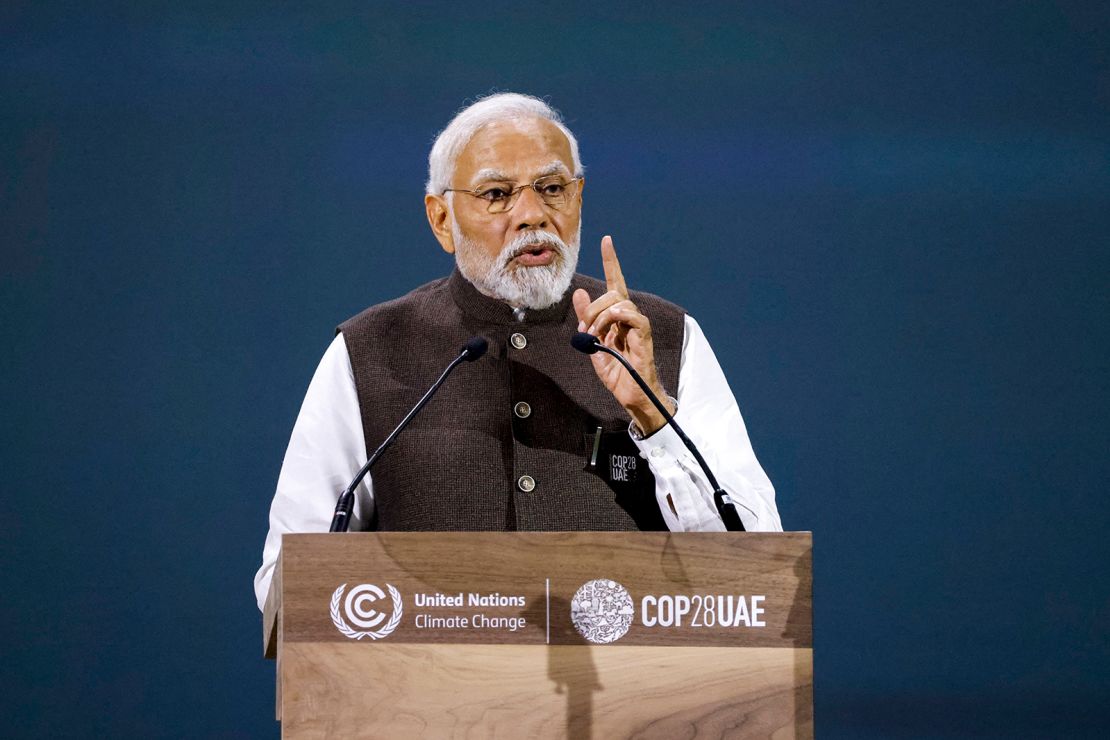
Rising heat
Vast swathes of India’s population remain reliant on AC for their physical and mental wellbeing. And the country’s more tropical southern regions remain hot year-round.
Over the past five decades, the country has experienced more than 700 heat wave events claiming more than 17,000 lives, according to a 2021 study of extreme weather in the Weather and Climate Extremes journal. This June alone, temperatures in some parts of the country soared to 47 degrees Celsius (116 Fahrenheit), killing at least 44 people and sickening hundreds with heat-related illnesses.
And by 2030, India may account for 34 million of a projected 80 million global job losses from heat stress, according to a World Bank report in December 2022.
This puts millions of people at risk in a country where more than 50% of the workforce is employed in agriculture. And as incomes steadily rise, all while urban populations explode, AC ownership has grown at a remarkable rate.
Electricity consumption in India from cooling – which includes AC and refrigerators – increased 21% between 2019 and 2022, according to the IEA. By 2050, India’s total electricity demand from residential air conditioners will exceed total electricity consumption in all of Africa today, it added.
But this demand is also exacerbating the global climate crisis.
Like refrigerators, many air conditioners today use a class of coolants called hydrofluorocarbons, or HFCs, which are harmful greenhouse gases. And even more problematically, air conditioners tend to use large amounts of electricity, generated by the burning of fossil fuels.
The World Economic Forum (WEF) estimates that – if not reined in – air conditioning-related greenhouse gas emissions could account for up to a 0.5 degrees Celsius rise in global temperatures by the end of the century.
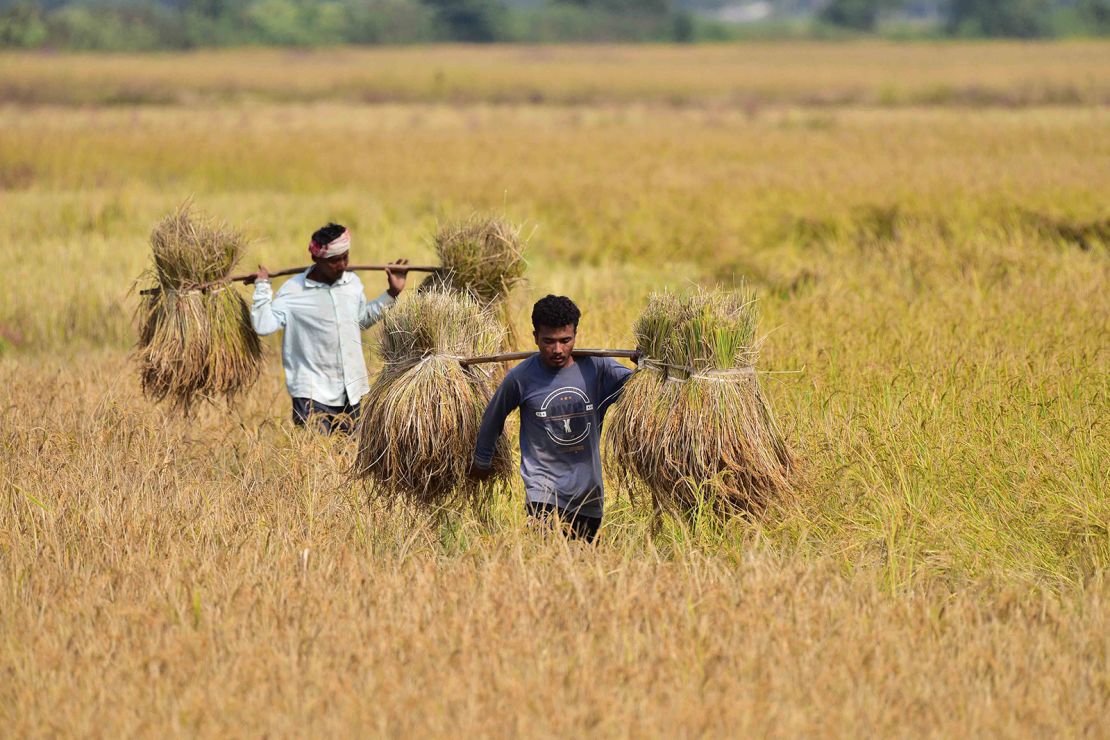
India’s dilemma
India is still grappling with widespread poverty, while spending billions to upgrade its transport and urban infrastructure, as it faces longstanding challenges to improve living standards.
And limiting cooling-related emissions might be seen as a possible barrier to the country’s economic growth, experts say.
During the recent COP summit, 63 countries – including the US, Kenya and Canada – signed a pledge to cut their emissions from cooling systems by 68%, along with several other targets, by 2050. India was not among the group.
Despite this, Brian Dean, head of energy efficiency and cooling at Sustainable Energy for All, which helped to develop the agreement, said India has shown “important international leadership on cooling.”
“While it has not joined the Global Cooling Pledge yet, important progress on sustainable cooling has been made domestically and international partners hope that India considers joining in the future,” he said.
Under the United Nations’ 2016 Kigali Amendment, many countries including India are phasing out HFCs and replacing them with more climate friendly options, such as hydrofluoroolefins, or HFOs.
Similar moves have worked in the past. The Kigali Amendment is an update to the Montreal Protocol that helped to phase out ozone-destroying chlorofluorocarbons, or CFCs, in the 1980s.
Still, countries that lack access to adequate cooling need help to meet the cost of energy improvement, according to Radhika Khosla, associate professor at Oxford University’s Smith School of Enterprise and Environment.
“Cooling is now on the global agenda,” she said. “But the hard work must begin to ensure everyone can stay cool without further heating the planet.”
Planting trees to absorb sunlight, water bodies, courtyards that promote cooling and clever ventilation are among the more sustainable “passive cooling strategies” suggested by Khosla.
Installing ceiling fans in buildings can reduce household energy consumption for cooling by more than 20%, she added.
“If successful, passive cooling measures could curb the demand for cooling by 24% by 2050, saving $3 trillion and negating greenhouse gas emissions equivalent to 1.3 billion tons of carbon dioxide,” she said.
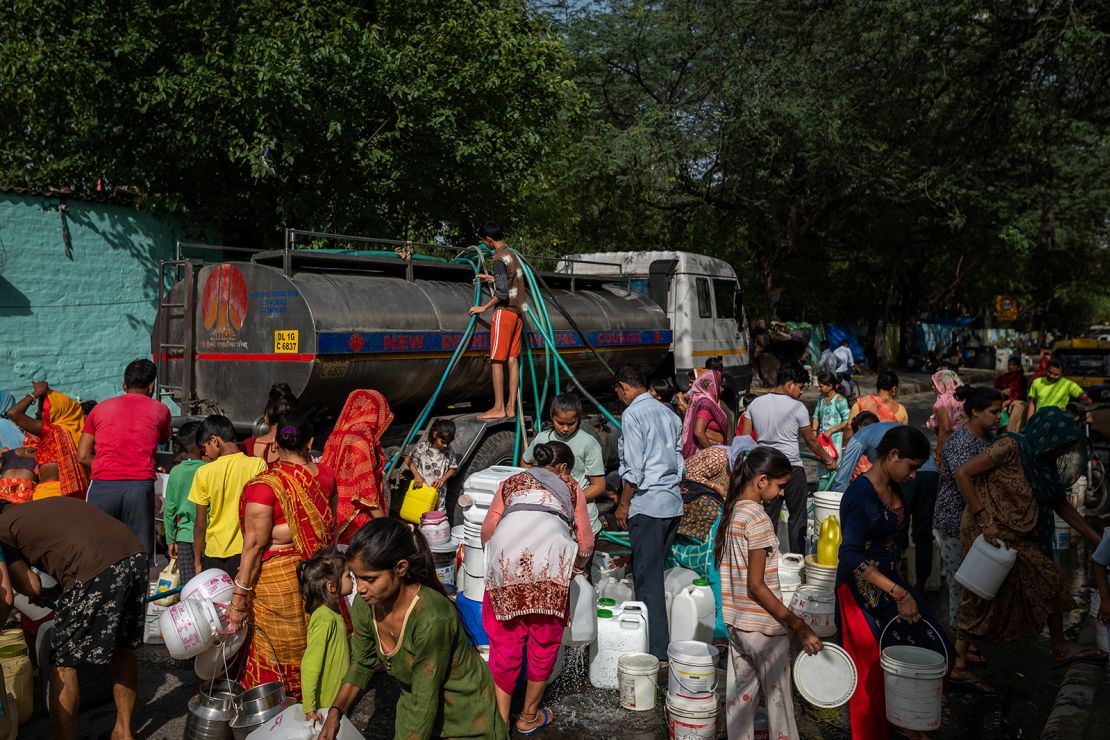
Cooling plan
India has also promised to reduce its power demand for cooling purposes by 20-25% by 2038 under its own cooling action plan announced in 2019, while still focusing on developing and implementing cost-effective solutions that align with its economic goals.
Dean calls it “one of the first comprehensive national Cooling Action Plans to be developed globally.”
It was, he said, “an important moment for emphasizing the need to proactively and urgently address cooling demand growth, including in agriculture where sustainable cold chains can prevent food loss and improve nutritional outcomes.”
Renewable energy is also growing faster in India than in any other major economy, and data shows it’s on track to meet its emission reduction targets, according to Leena Nandan, India’s secretary for the Ministry of Environment, Forest and Climate Change.
India remains proactive in finding climate solutions, despite not being a major contributor to the crisis, she told reporters during the COP28 summit.
“We have gone on to scale up our climate ambitions,” she said.
But India’s AC boom has been visible in almost every urban corner of the country.
Hundreds of construction sites are scattered throughout the capital, where laborers toil to build gleaming high-rise towers to house New Delhi’s burgeoning middle class.
Penta Anil Kumar, a businessman who lives in Lajpat Nagar, a bustling south Delhi neighborhood, said he is aware of the harmful emissions released from his air conditioner, and deliberately bought an energy efficient model able to meet his cooling needs.
“While I know the use of air conditioners is contributing to higher temperatures, I also know I cannot do much else,” he said.
But Kumar is among those more fortunate who can afford a more expensive AC model.
Ghasiram, a 65-year-old laborer from Delhi’s Rohini neighborhood, paid a contractor $36 to secure a second-hand AC unit for his family. But this is more than what he earns in a month.
Ghasiram, who goes by one name, said he didn’t know emissions from his AC were partly fueling rising temperatures. But he is suffering from the consequences.
“The heat has gotten worse over the years,” he said. “When I need to step out to work in the heat, I feel nervous. I prefer to not go out.”



